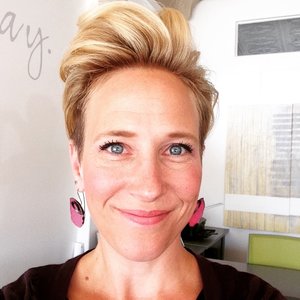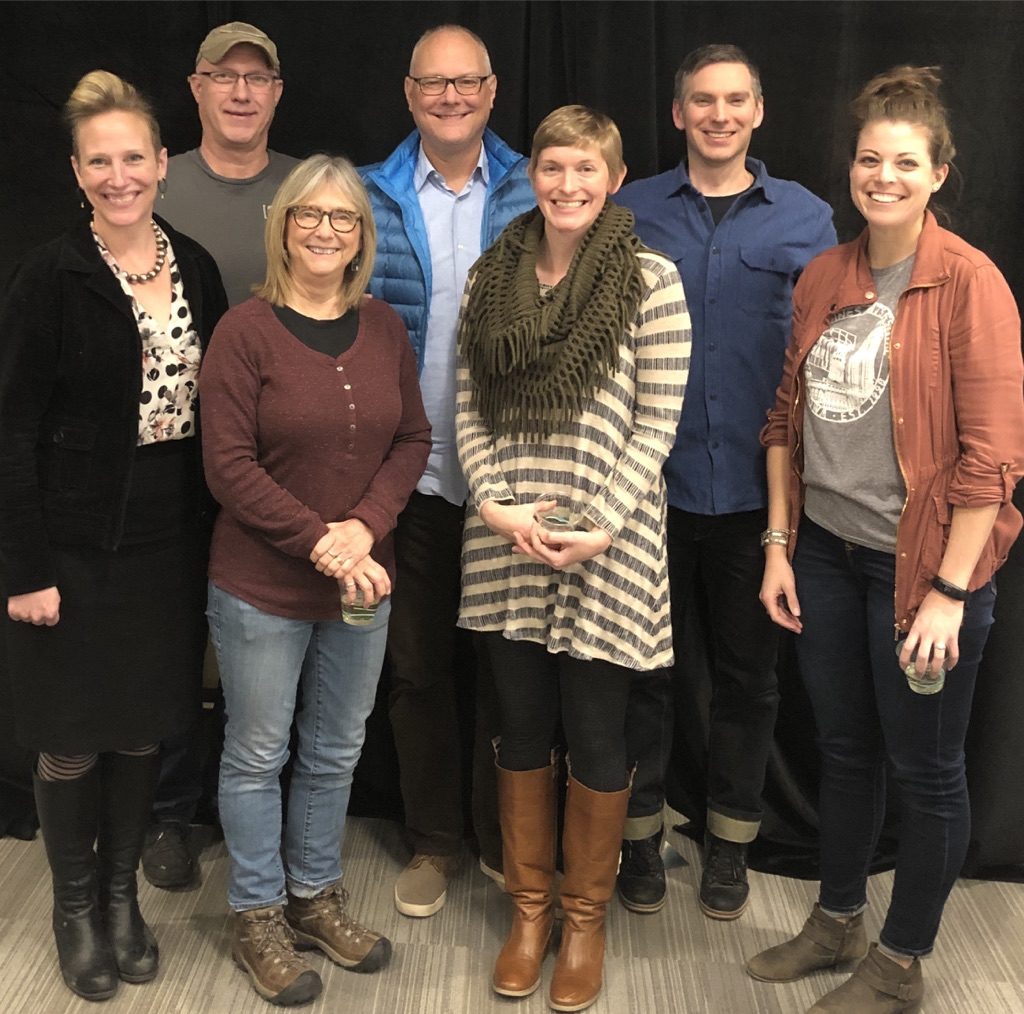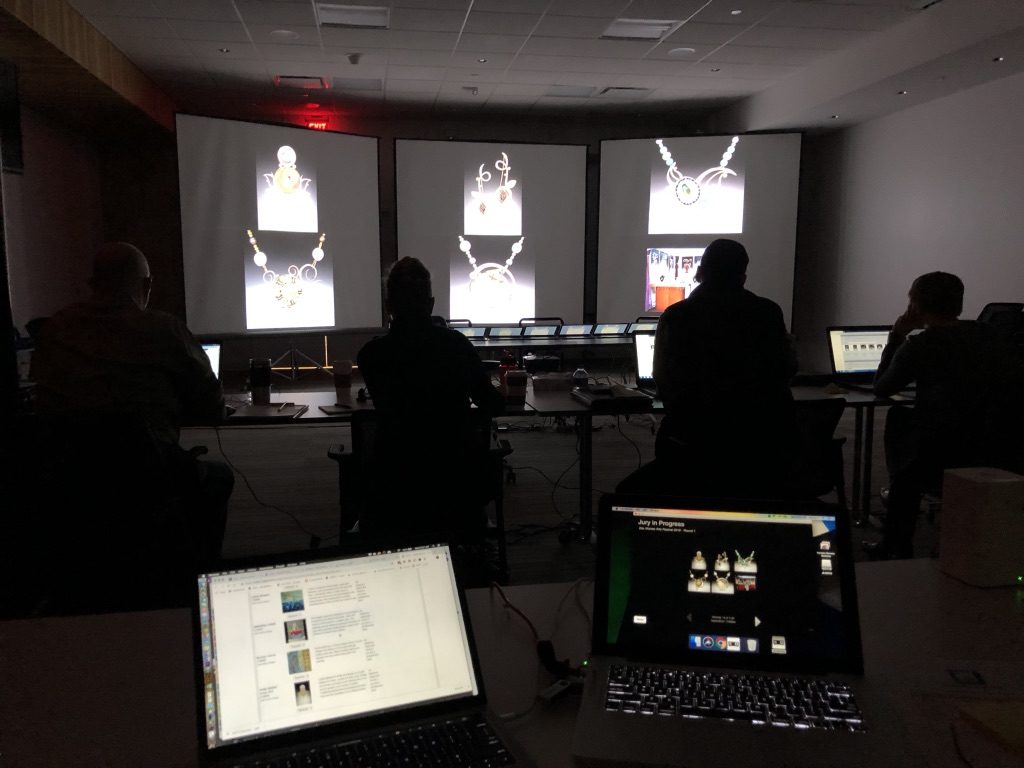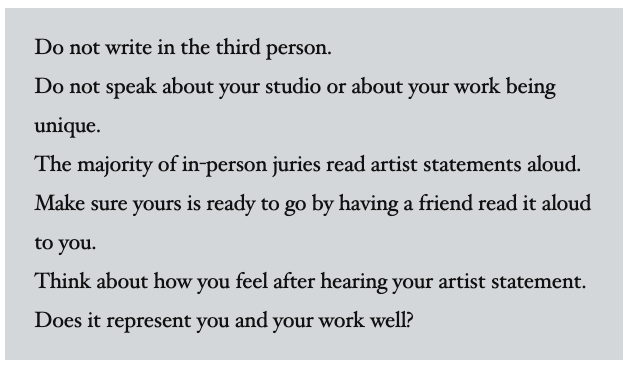“If I was going to sell something, I wanted to sell art.”

Courtesy of PS Art Consulting
Jennifer Perlow has been working in the arts for more than a decade. Co-founder and principal of PS Art Consulting—a firm that sources and installs art for hospitals, hotels, and law firms —she spends the majority of her time working with organizations to find art that is perfect for their space. However, she was not always working in the arts. Perlow started her career as a salesperson. After selling pharmaceuticals for a short time, Perlow realized her heart wasn’t in it. “If I was going to sell something, I wanted to sell art,” she said. And, as a curator of arts, she finds being a festival juror to be an essential function of her job.
“The jury process is a little like sharpening my knives. You know, looking at a large group of artists for a particular purpose—with the anticipation of culling that—it’s strengthening your critical thinking skills” said Perlow.
To reach her goal of jurying one show a year, Perlow sends out resumes and credentials to festival directors with whom she wants to work. Word of mouth definitely helps, but often times she has to put herself out there. For the Des Moines Arts Festival jury, she sent her resume to the director, Stephen King, years before he invited her to jury. Perlow was a juror for the festival in February 2019.
Perlow has juried more than 15 shows, including Cherry Creek Arts Festival in Denver, Colo., Saint Louis Art Fair, in St. Louis, Mo., Sausalito Arts Festival, in Sausalito, Calif., and most recently, the Des Moines Arts Festival in Des Moines, Iowa.

Courtesy of Des Moines Arts Festival.
Des Moines Arts Festival is unique in that artists do not select a medium category when submitting their applications. During the jury, all of the artwork is shown together in random order, rather than being sub-sorted by media the way many shows jury. Jurying a whole show at once like this is a long process. To Perlow, it’s an interesting way to approach scoring a festival and she believes that it’s probably more fair. “You’re taking the entire lot as a whole and you’re judging solely on the merit of the work” she said.

Photo courtesy of Des Moines Arts Festival.
While jury processes do change slightly across fairs and festivals, for Perlow, every event’s jury has a common goal: selecting the best art for their community. This parallels how she approaches consulting projects. Each festival, hospital, law firm, or hotel has a story they want to tell. Part of Perlow’s job is to discover what a client wants to say and how they want to say it.
When we spoke to Perlow about artist’s applications, there were three major components she covered: the artwork images, the booth shot, and the artist statement. Of these elements, one part is consistently overlooked:
“The artist statement is very important.” – Put that in bold letters, Perlow requested.
Artists excel at the visual aspect of their jobs and the same care and attention should be given to the artist statement. The best of the best tend to talk solely about the work and why it was made, and they provide insight into the artistic process. An artist statement is not a make-or-break factor in all juries, but in some juries it can mean the difference between an invitation and being put on the waitlist—particularly if competition is fierce.
Vet your own artist statement by following Perlow’s advice:

The next part of the application is the booth shot. Most often, jurors look for an updated and professional shot of the booth—particularly one that doesn’t have festival attendees wandering through the frame. “If you do not have a booth shot, borrow somebody’s tent, set up a booth, and take a shot. Nobody has to know it’s not at a festival,” Perlow suggested.
The artwork is the focal piece of an artist’s application, so these images help artists put their best foot forward. While images that are taken with a phone may work for local markets, Perlow noted that those who want to succeed as professional artists invest in professional images of their artwork. “It is not easy to take images of artwork. It is not something most people can do. We don’t have the right setup, we don’t have the right lighting. So having somebody who can do that for you is important,” Perlow explained.
In today’s society, being an artist is, unfortunately, not always treated like a real job. However, Perlow said, “it is a real job and people should treat it as a real job.” This expands beyond the time and resources spent in a studio. Being an artist also means you have to spend time marketing your art, maintaining a database of contacts, and working on your business, she said.
The application you submit to a festival is a visual resume. “Does this represent you well? Does this tell your story—and really think about that,” Perlow elaborated. That includes the whole picture—professional images of your artwork, a clean booth shot, and a thoughtful artist statement.
“Not every opportunity is a good opportunity.”
Perlow found her niche by focusing on work that she thinks helps healing. She believes that art in healthcare is vital, and accordingly focuses most of her consulting business on hospitals. For artists, it’s important to find a niche where you can best attract your target audience. While Perlow gave a lot of advice pertaining to festival juries, she also noted that there are many routes an artist can take to make a living. “Not every opportunity is a good opportunity,” she said. “If you hate talking to people, don’t do festivals.” From galleries to studios to art fairs and festivals, there are always new opportunities popping up for visual artists, and artists should consider their strengths and weaknesses when choosing an ideal route and venue for showing his or her work.
